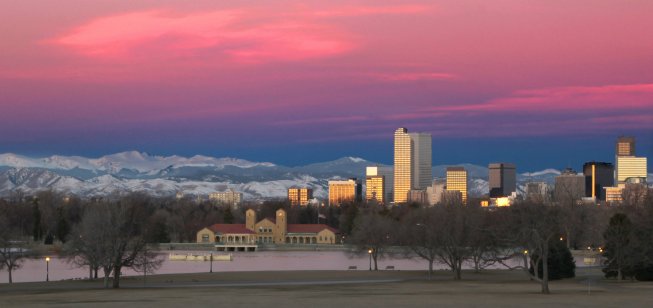The COVID-19 pandemic and its associated economic effects have upended much of the conventional wisdom around multifamily preferences, adding new wrinkles and complications to the process of determining where, and how, families want to live.
The advent of work from home has led to an exodus from “gateway” markets, many of which are now in a rent growth free fall. While some of these renters are moving into the for-sale market, others are seeking out different markets with lower costs of living or opting for single-family rentals, build-to-rent or otherwise.
“They’re secondary and tertiary markets,” says Chris Nebenzahl, institutional research manager at Yardi Matrix. “They have a heavy tech and finance infrastructure, and they’re some of the fastest-growing in-migration markets when you look at markets like New York and San Francisco losing people.”
Working with Zonda chief economist Ali Wolf and multifamily specialist Kimberly Byrum, Multifamily Executive has set its sights on five multifamily markets with demand fundamentals, economic conditions, and job activity worth watching for 2021.
Austin
As one of the most popular secondary markets of the past several years, Austin, Texas, remains a strong multifamily consideration, even as its fundamentals have moderated. The market’s rent growth has fallen since the start of the pandemic, from 3.5% YOY in February 2020 to -4.1% YOY in November 2020. Overall rents have fallen from $1,405 to $1,352 over the same period.
Nebenzahl attributes this trend, in part, to Austin’s immense supply growth—new deliveries currently make up 4.5% of stock. Still, the city’s population is growing apace; in July 2020, the city of Austin estimated that its population had hit 1 million. Occupancy has fallen back slightly, but remains strong at 93.4% in October, down from 94.5% in November 2019.
“For the past two or three years, Denver, Austin, and Dallas-Fort Worth have been the markets with the most deliveries as a percentage of stock and absolute deliveries in the country,” he says. “I think you’re seeing perhaps slightly weaker fundamental data in terms of rent growth, a bit weaker on the occupancy side, because they’re also dealing with this influx of new stock.”
Boise
While Boise, Idaho, has long been considered a strong single-family market, 2020 demonstrated the potential strength of its multifamily sector. Of the five markets on this list, Boise shows the strongest year-over-year rent growth—8.8% YOY in November 2020, up from 5.3% in February 2020. Its overall rents have risen from $1,181 to $1,264 over the same period.
“Boise is a market that’s really kind of surprising,” says Nebenzahl. “It is one of the fastest, if not the fastest, growing rental market in the country. Its in-migration and new development pipeline—so not necessarily what has been delivered, but what is currently in development—is off the charts. So usually that says, wait a minute, that might be concerning. And yet the demand drivers have been absolutely stellar.”
As a relatively new multifamily destination, Boise’s new supply growth exploded over the summer as a percentage of existing stock, up to a high of over 10% from April 2020 through June 2020. Despite this growth, occupancy rates have remained between 96.4% and 96.6% since the start of the pandemic.
“Multifamily new-home starts in the Boise market have increased 34% compared with [end of the year 2019], but only account for 296 annual starts,” says Eric Allen, Zonda regional director for the Boise and Salt Lake City regions. “… With prices increasing at a very rapid pace, the multifamily market will continue to grow as fewer buyers can qualify for a single-family home.”

Mihai Andritoiu
Charlotte
Charlotte, North Carolina’s year-over-year rent growth took an initial hit during the pandemic, falling from 5% in November 2019 to a low of 0.5% in June 2020. However, the market has regained its momentum over the summer and fall, with rent growth rising to 2.2% YOY in November 2020. Overall rents stand at $1,229, and occupancy remains steady at 94.9%.
“Phoenix, Boise, and Charlotte don’t have a headwind of new supply to contend with,” says Nebenzahl. “Now that might change very quickly; developers might see the migration trend and say, ‘OK, let’s put a shovel to work.’ But as far as the data we’re seeing through November, the reason that Charlotte, Boise, and Phoenix are outgrowing Denver and Austin is they’ve got all the tailwind—people moving in, gross income coming in, jobs relocating, and everything.”

Adobe Stock / jmeccadesign
Denver
Like Austin, Denver’s fundamentals have weakened over the course of the pandemic, but the market remains strong on its ongoing merits.
The market’s rent growth has fallen from 2% YOY in February 2020 to -1.4% in November 2020, but overall rents remain high at $1,544, down only $13 from February 2020. Occupancy rates remain steady at 94.6% in October 2020—up from 94.2% in February 2020—though deliveries as a percentage of stock remain high at 4.6%.

Adobe Stock
Phoenix
“In a typical cycle, for-rent does really well or for-sale housing does really well. They don’t usually do well at the same time,” says Jim Belfiore, whose Phoenix-based company, Belfiore Real Estate Consulting, recently became part of Zonda, which also is the parent company of MFE. “In the Phoenix area, we’ve built more new rental homes than we’ve built in the history of the metropolitan Phoenix area over the past eight years.”
The Phoenix market’s rent growth has moderated slightly but remains high year over year, down to 4.3% in November 2020 from 7.6% in November 2019. Overall rents have risen to $1,259, occupancy has remained steady at 95.6% in October 2020, and deliveries as a percentage of stock have remained between 2.7% and 2.9% since the middle of the summer.
Single-family rentals, and build-to-rent communities in particular, have grown into a unique cornerstone of the Phoenix rental market. “It’s rental, but it’s sort of a new asset class that appeals to a much broader demographic,” Belfiore says. “It’s just a little bit lower in density and a little bit higher in cost. It’s sized right, and most of it is single-story, so it appeals to this broader demographic. And it’s just taken off, and I’d say if you’re looking for an asset class that looks like it has a lot of room to run, it’s this asset class.”